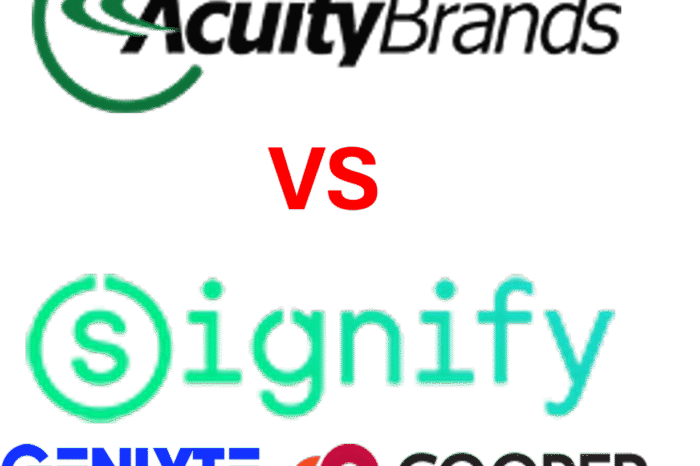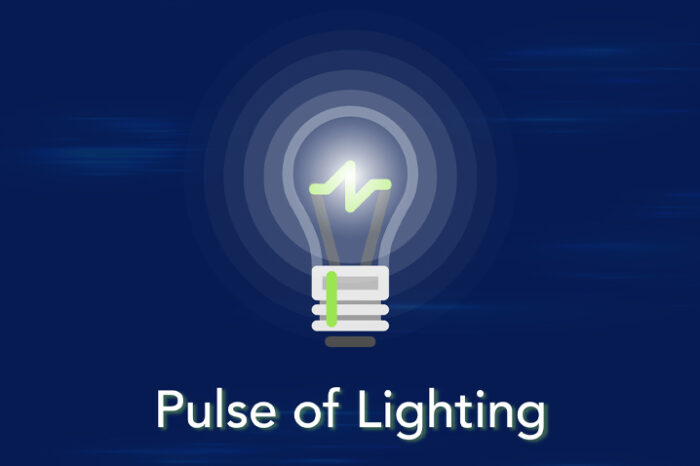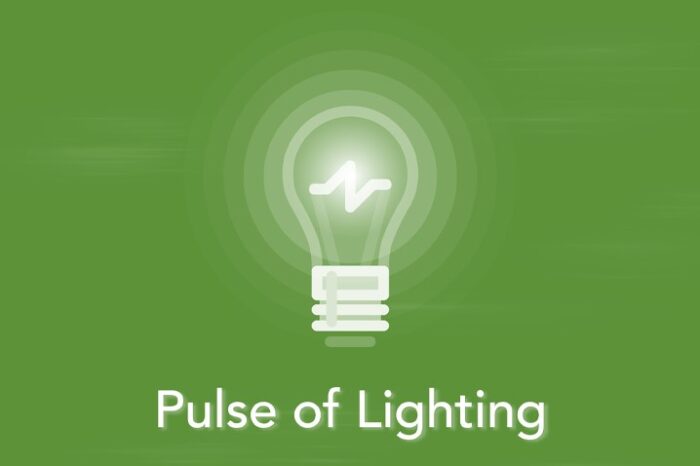Lights On, Lights Off – The Tale of Cree and Acuity
 You may remember the tv ads for The Clapper. The device where you clapped and the lights went on; clap again and they went off. It appears to be making a comeback, albeit as an analogy for Acuity and Cree. Acuity seems to have “light on” as it continues to grow and Cree is “light off” as it continues to face challenges and now appears to either have higher industry headwinds or an opportunity to execute on its vision for a disruptive business model complemented by “innovative”, premium products.
You may remember the tv ads for The Clapper. The device where you clapped and the lights went on; clap again and they went off. It appears to be making a comeback, albeit as an analogy for Acuity and Cree. Acuity seems to have “light on” as it continues to grow and Cree is “light off” as it continues to face challenges and now appears to either have higher industry headwinds or an opportunity to execute on its vision for a disruptive business model complemented by “innovative”, premium products.
Both recently reported their earnings. Let’s take a look at what they said.
- Prior to there earnings call it was announced that they had done a layoff. While no numbers were reported (they didn’t have to file a notice here in North Carolina), it was reported that there were a number of layoffs in Wisconsin and some in Raleigh.
- The company hired a new president for the lighting group, Daniel Castillo. Daniel comes from Eaton where, one of his roles, was president of Cooper Lighting.
His mentor was Kirk Hachigan who did very well for Cooper Industries shareholders. Daniel understands the distribution industry as well as the lighting industry. Hopefully he is the right person to “right the ship”, which has also had a revolving sales / distribution leadership door. - From the call regarding’s Cree’s Q1 (they are on a fiscal year)
- Lighting revenue was down 7% to $184M with a gross margin of 26.8%. LED products revenue was $137M with a gross margin of 20.4% … all at the upper end of their targeted range. (but remember that -7% number, still a long way to go to meet where others, and distributors are regarding LED fixture sales. Lamps, inevitably, are a challenge given the price decline and the need to increase unit volume.)
- Improved lighting margins on their commercial and consumer business.
- Customer service and lead times improved (distributors, do you agree with this?)
- Seeing increased lighting project quotation (but didn’t mention if this is coming from distribution or its “agency-driven pipeline”. Distributors, are you seeing more activity with / for Cree? Are you quoting them or competing against them?)
- Interesting that DSOs increased by 4 days and days on-hand inventory for commercial lighting finished goods increased by 11 days. Perhaps an affect from the new ERP system?
- Forecasting essentially “flat” for lighting and LED in Q2 (next quarter) as they “continue to build momentum”.
- A goal of what is called Cree 3.0 is to “build a more valuable LED lighting technology company”. (Interesting positioning with the believe that customers will adopt technology at an increasing rate vs illumination.)
- Second goal is driving top line LED lighting growth to “in line with the market”. They are also considering M&A activities with some of the funds from selling WolfSpeed but not for the “next few quarters” due to new leadership team.
- Receiving good marketplace / retailer acceptance for new “premium” lamp line.
- Highlighted some of their new products
- Acknowledged need to “earn-back share of mind with our lighting agents and distribution channel partners” to generate new business.
- Empathized they are bringing in “experienced lighting leaders” who understand the “traditional lighting industry and sales channels.” (Perhaps recognition that some ‘approaches’ didn’t work?)
- Shared that it takes 2-3 quarters, hence 6-9 months, for many projects to go from quote to ship. (The importance of this is the need for distributors to ensure that their salespeople follow-up on quotes. While the 6-9 could be from spec to ship, the point is that “longevity is not your friend in the project / quotation game”.)
- Was asked about industry LED lighting growth but avoided the question. (Industry information is available from NEMA and can also be benchmarked from other lighting companies.)
- Continuing to build out product line to enter segments / niches haven’t been in; and hoping will power some growth as these are new opportunities for Cree.
So, improvement but challenging and, from our conversations with other distributors and manufacturers, under-performing on sales growth.
And then the lights on” side of the commercial lighting business … Acuity.
Here’s feedback from their Q4 call (also on a fiscal year)
- Net sales up 22% for the year to $3.3 billion, inclusive of acquisitions (remember the above -7% and the outlook for flat? It would appear that Acuity is taking share in the lighting market with share being defined as “available business in the fixture market.”)
- They estimate that the market is mid-single digit growth, (which would make industry growth 5-8% and their growth 10-16%)
- Without acquisitions the business was up 13% with sales volume up 15%.
- Gross profit margin was 43.7%.
- Sales also increased 22% for the quarter and sales volume increased 13% with Juno and Distech adding 12% (the 3% difference is price mix and currency fluctuations.)
- Adjusted gross profit margin was 43.5% (significantly higher than Cree’s)
- They have $413M of cash on hand after spending $623M on acquisitions, which may mean future acquisitions.
- LED fixtures are almost 67% of sales (which is more than LED when you include controls and software, hence LED as a % of fixtures would be higher.)
- Incurred some lost sales due to closing of a plant, short-term labor issues and other operational issues. Resulted in a loss of $25M in sales but issues are resolved.
- Acuity decided to make the operational changes prior to the close of their fiscal year, otherwise sales and profits would have been a little higher. This was done to position for 2017.
- Position themselves as a lighting and building management company. (Potentially creates opportunities who partner with Acuity to diversify themselves into building management … or building management will diversify into lighting!)
- Their Tier 3 offering of a “holistic integrated lighting and building management solution for indoor and outdoor needs” is now more than 10% of sales … $300+M and grew at at 40%. (The Internet of Things for lighting is growing. Question becomes, which distributors are either driving this or supporting it or is Acuity doing the heavy lifting, selling and fulfillment?)
- And they are starting to receive from “additional recurring revenue streams” through data collection in their Tier 4 offering. (are distributors participating in this new revenue stream based upon products they’ve sold or “their” customers?)
- Company added 100 salaried employees in Q4. (not too many companies adding net new head count)
- 2017 outlook
- North American lighting market will grow mid-to-upper single digits with the benefits of new construction, renovation and retrofit activity.
- Expect margins to grow; pricing to be stable
- Expects Acuity’s growth rate to outperform market with increased focus and interest in Tier 3 and Tier 4 offerings.
- Regulatory environment relating to building codes and utility rebates support growth outlook…more sensors, more rebates.
- Acuity thinks in terms of $2.50 / sq’ for fixtures and .50/sq’ for controls for retrofits.
- Feels the new nLight ECLYPSE offering can help capture more of this market while also collecting data and better managing “the building experience”. (Also relates to the issue of “wellness” – people and building – referenced by Dodge and in our “disruption” posting.)
- Department of Energy says <15% of outdoor market has converted to LED and <5% of indoor market has converted. (which infers that those who market and sell to this market may be able to accelerate their business. If distributors don’t, others will, and may by material through other means.)
- $800+ billion market?
So, you can see that the results were different, the business focus is different and, if you read the reports, the tone of the presentations was different.
And Acuity is joining AD’s US electrical division in January which will further accelerate sales to this group of 140+ distributors that represent more overall sales than any national chain and, at the same time, removes the potential for Cree to join a group as now Acuity, Hubbell and Philips will be in groups while Eaton Lighting is supported by the overall Eaton platform.
What are you seeing from both companies in the distribution channel? What would you recommend to Daniel Castillo as part of his first 100 days?
























